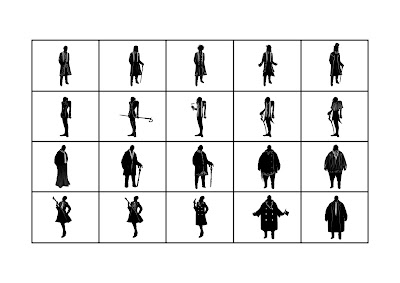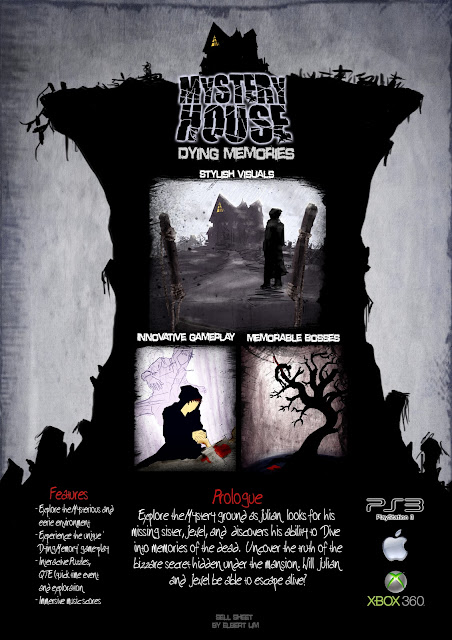In this project, I am required to come up with 100
silhouettes either of environments or characters, I choose the latter, then
develop and finalized it further complete with its model sheet. Coming up with
100 sketches of characters out of a blank page only filled with boxes is
difficult, which is why I decided to divide them into groups; main characters
(Protagonists and antagonist) Julian, jewel and Seth and also the murder
victims to 20 each and the rest for other supporting characters (in that
order).
The style of my design are set in a current day and there
are really no weapons or armors involved, therefore it was slightly trickier to
come up with distinct silhouettes and poses, which is why I decided to work
more on what they’re wearing instead of the poses itself. Also to further
elaborate, the different death situations are more interesting to work on in
this case, some of them are inspired by various Japanese detective comics to
movies like SAW.
I have chosen 1 design each from the main characters to be
finalized but kept it focused more on the protagonist, Julian.
Here are the visual concepts of Julian from the silhouette
process till its fully finalized form.
The Character Julian was meant to be a silent hero type in
the beginning but because the isolated plot would mean that he won’t be
interacting with much characters apart from dead people and his sister and Seth
that he’ll only meet at the very late part of the game, his character is forced
to be more vocal, unless I introduce another element which can act as a
narrator or chatty side-kick (think GlaDos or Wheatley from Portal or any
silent hero Japanese Role Playing Game side characters). Julian is naturally a
quiet person but he is presented with this confusing situation where he had to
use his new found ability of diving into people’s memories and having to solve
a massacre in a strange mansion, therefore he will be throwing comments every
now and then and during cutscenes but again not to the point of him sounding
whiney due to his confused state; that is more or less overshone by his
compassion as a younger brother that’s will put his life on the line to get his
sister back safely. Visually, he is really simple and straight forward, scruffy
hair not too neat kind of look, I threw in a stripe sweater to capture a more
gothic look to suit the setting but covered it up with a dark colored jacket
that has a hoodie to make him look slightly more mysterious and emphasize his
moody personality. The symbol on his back is an in-game symbol for ‘Divers’ and
only appears when he is in a Dying Memory state and at save points. Even when
Julian is forced by situation to speak, I still try to keep him more in sync
with protagonist such as Wander from Shadow Of The Colossus or Isaac Clarke
from Dead Space, that keeps conversations at minimal and let players be in
their shoe, like a vessel in many ways.





































